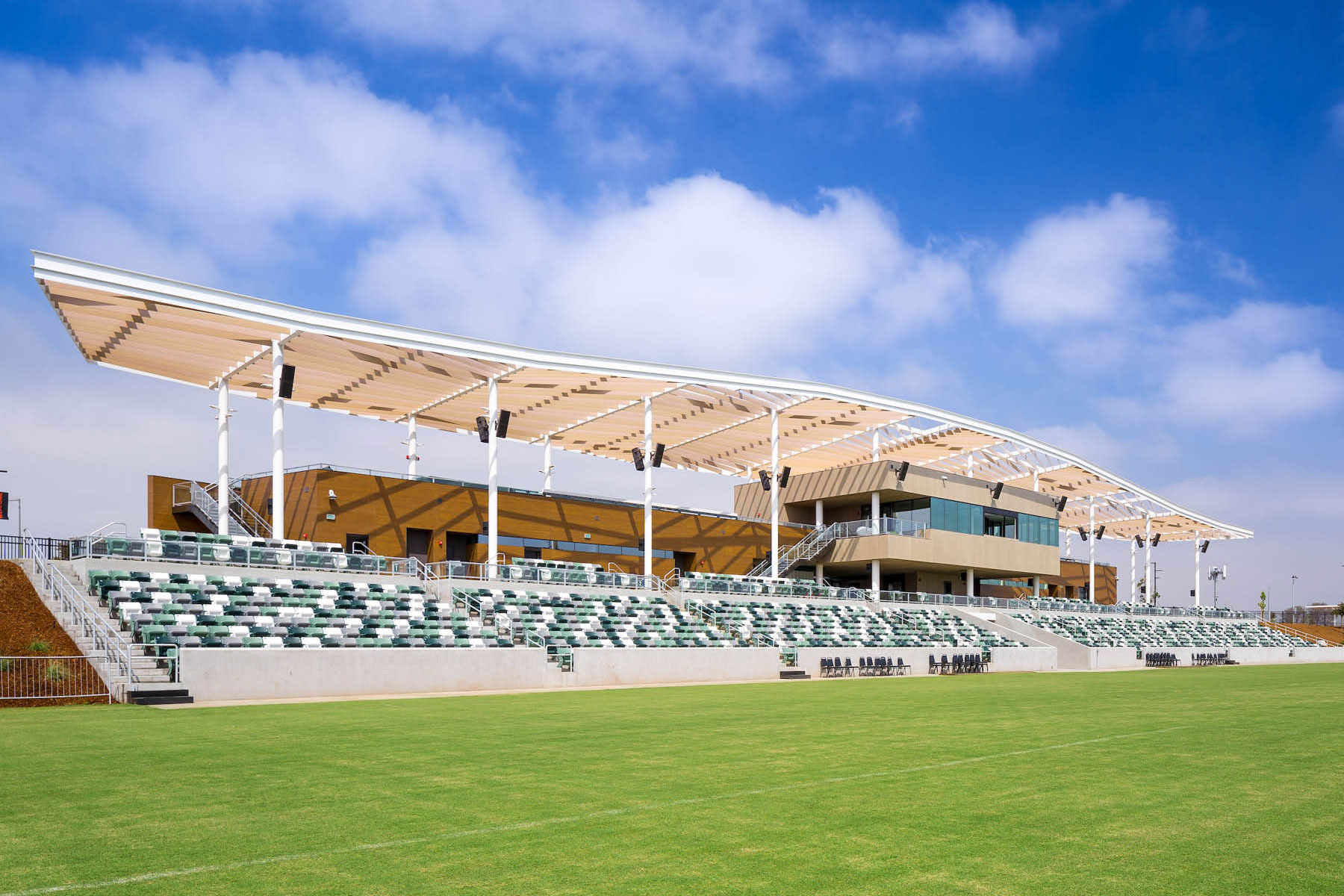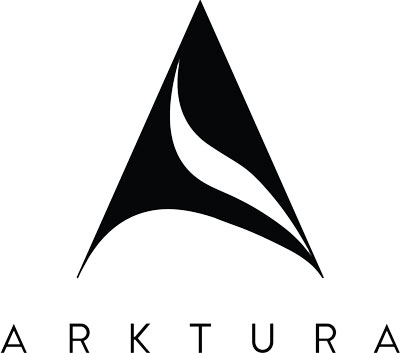Story at a glance:
- The Arktura team explores what it means to be a sustainable company in today’s world.
- Being a truly sustainable as a company means you have a neutral or positive impact on the environment and society.
- There are some quick steps you can take to begin the process of measuring your own company’s impact.
What does it mean to be a sustainable company?
By now phrases like carbon neutral, carbon negative, green company, zero carbon, and more have veered toward marketing jargon rather than ecological goals. Somewhere in the middle of a Venn diagram between financial gain and doing good for the environment lies a perfect, eco-friendly middle ground of sustainable business practices.
Since becoming sustainable as a company can look so different from one company to the next, especially across industries, it is crucial to examine your company’s specific direct and indirect impact. It may be tempting to view competitors’ sustainability measures and use them as a roadmap. However, the first critical step in becoming a more sustainable company is taking ownership of your effects on the environment. Self-examination will lead to understanding your company’s problems, leading to your own definition of sustainability. While the intricacies of sustainability might be challenging to accomplish, there are some overarching common goals that companies can strive to achieve in this green space.
The Impact of the Construction Industry on Greenhouse Gas Emissions
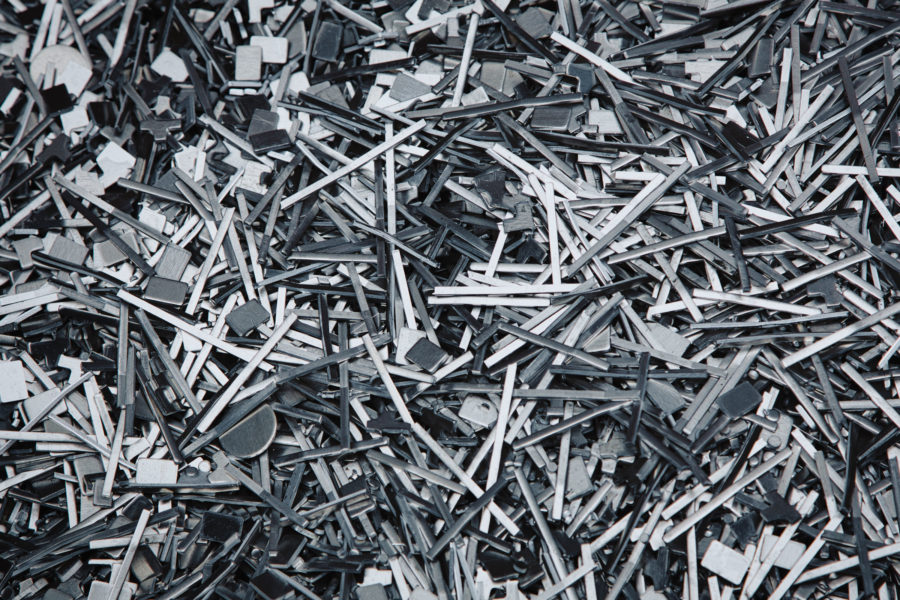
Arktura strives to go green. All of their materials have a high proportion of recycled content and can be processed for recycling. Photo courtesy of Arktura
Worldwide, the building and construction industry was responsible for 34% of energy demand and almost 40% of CO2 emissions in 2021. These rates are up from the previous year when the pandemic slowed construction progress across the globe. This portion of the world’s greenhouse gas emissions doesn’t just come from one source or aspect of the construction industry. These energy demands encompass many areas of the built environment—from clearing land to constructing new buildings to the utilities, like gas, water, and electricity that are required once the building is completed and occupied by either residential or commercial usage.
Technological breakthroughs are allowing more carbon-neutral and even carbon-negative building processes. Opting for more ecologically friendly options in building materials, advancement in design, recycling construction materials, and increasing efficiencies are all on the rise. As more developers and, eventually, end clients increase the demand for more sustainable building options in the market, we will see an increase in the accessibility of these materials. It’s reported that the application of alternative additives or materials or techniques and systems can reduce up to 90% of carbon dioxide emissions at different stages of construction and building, according to The National Center for Biotechnology Information.
The Future of Green Building
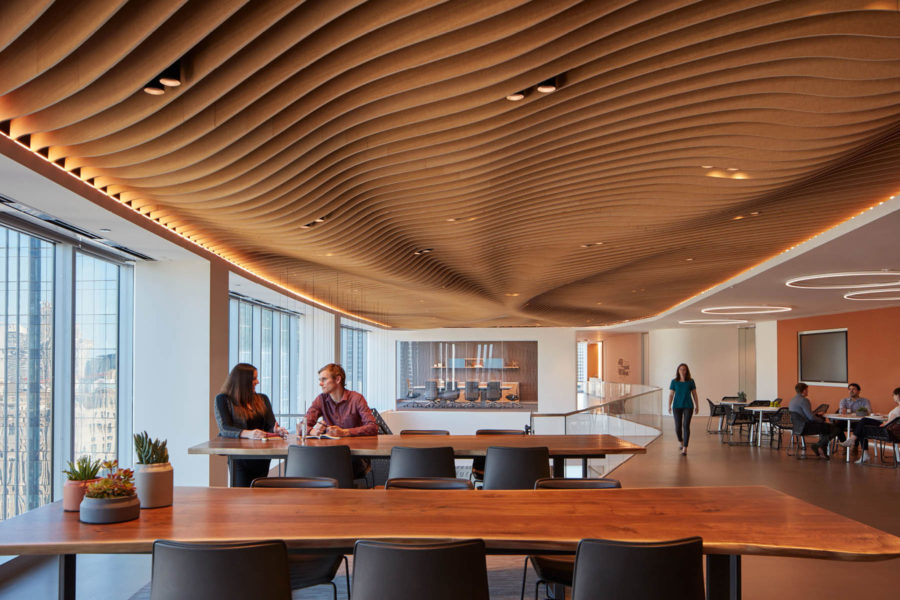
The soft, undulating waves of Atmosphera Analog 3D finished in Arktura’s premium wood texture are seen here at Mead Johnson in Chicago, designed by Partners By Design. Photo by Tom Harris Architectural Photography
New buildings and retrofits alike can get a leg up on sustainability thanks to breakthrough technology in materiality and other new developments in the sector. Sourcing more carbon-neutral building materials and utilizing technology like smart windows that automatically tint when facing direct sunlight help mitigate excess cooling in the buildings themselves.
In 2021 investments in building energy efficiency increased by 16% to $237 billion, according to the UN Environment Programme. This increase in demand and usage for green materials can act as a stopgap for carbon dioxide emissions until the industry can transition from carbon-emitting to carbon-neutral to ultimately carbon negative. Carbon negative is an end goal involving offsetting more carbon through processes like carbon capture, sequestration, or avoidance than what is contributed to the environment.
One of the most visible ways to get across a company’s sustainability commitments and efforts is through specific certifications (more on these below). These can include product certifications or, more broadly, project-specific certificates.
Understanding Your Company’s Impact
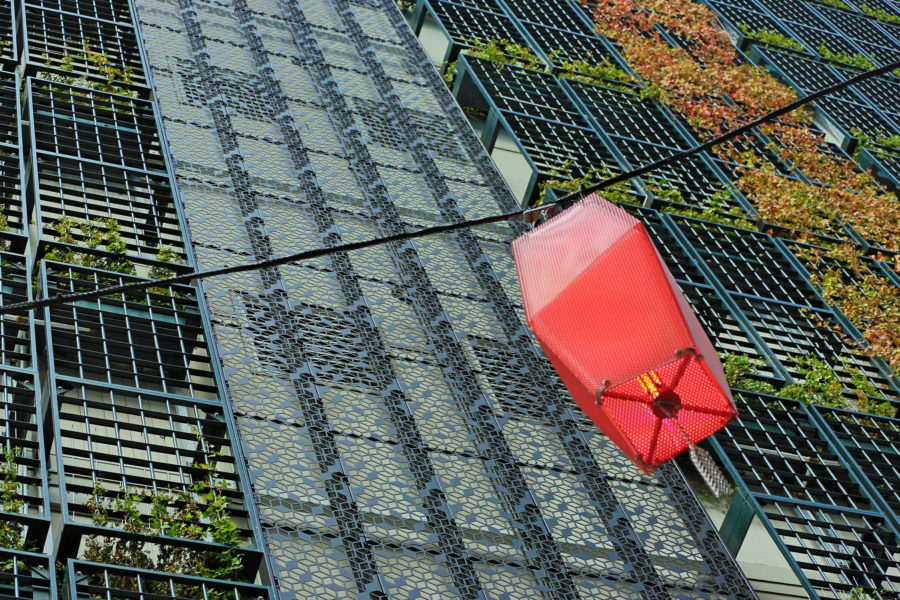
Bringing nature to design, this project features Vapor Cora as an exterior facade at 555 Robson in Vancouver, designed by MCM Interiors Ltd. Photo by Chris Barton Photography
ESG or Environmental, Social, & Governance, is a form of public reporting on the inner workings and global impact of your business and its operations. This consists of self-reporting on a company’s environmental, social, and labor related operations.
Among other crucial factors, ESG reports include:
- Carbon Emissions
- E-Waste
- Packaging Material and Waste
- Labor Management
- Business Ethics
This may seem daunting, but there are some quick steps you can take to begin the process of measuring your own company’s impact. Without quantitatively understanding your company’s impact on the environment it can be very easy to not address the root of your company’s largest impacts.
Steps to Understanding Your Company’s Impact
Collective global efforts toward greater sustainability have created the need for organizations of all sizes to be more transparent about what they’re doing to manage environmental, social, and governance risks, according to The Corporate Financial Institute. This type of reporting is now even mandated by regulatory and governmental bodies. This reporting keeps the company accountable for their goals and impact as well as provides a transparent look into the innerworkings of a company’s sustainability that can’t be fudged in a well-written marketing collateral.
Measure the carbon footprint of your company through a Scope 1, 2, and 3 Greenhouse Gas Inventory (see diagram below for more details). This will give you an idea of how much your company contributes to global warming, and where the largest influencers are.
Audit your products and services to determine if any harmful pollutants and chemicals are used in their production.
Measure your water usage to evaluate your impact on the local environment. Once you understand your current impact plan to reduce it. This is where it varies wildly depending on your specific company.
Certifiably Eco Friendly in the Built Environment
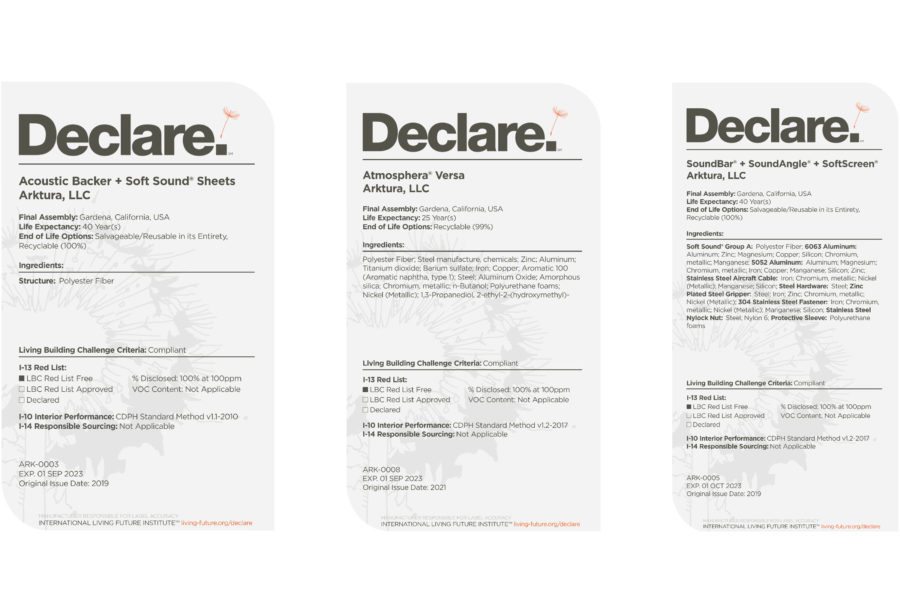
This is a sampling of Arktura’s Declare Labels, commonly referred to as nutrition labels for products. Image courtesy of Artkura
There are a handful of commonplace credits and certificates you will hear about that relate to sustainable building practices. LEED certification is used worldwide as a standard for sustainability. The USGBC, which governs LEED, defines it as a third-party green building certification program and globally recognized standard for the design, construction, and operation of high-performance green buildings and neighborhoods. The rating system approach focuses on efficiency and leadership to deliver the triple bottom line returns of people, planet, and profit.
Similarly the WELL Building Standard from the International WELL Building Institute is another certification that provides a guideline for creating and certifying that spaces are being designed to advance human health and well-being, taking a more holistic approach to human wellness.
While LEED and WELL certifications apply to finished construction projects, there are also specific certifications for individual products used in WELL and LEED spaces. An HPD, or Health Products Declaration, is the standard for the specification of accurate, reliable, and consistent reporting of product contents and associated health information. This organization encompasses a full range of members in the built environment, including architects, designers, manufacturers, and consultants. A product’s environmental impact can also be measured by EPDs or Environmental Product Declarations. These are transparent reports that can be verified by a third party, showing a product’s carbon footprint from materiality to manufacturing as well as its usage stage and end of life.
Another type of public reporting is through the International Living Future Institute’s Declare Labels. These labels act as nutrition labels for construction and building materials. This type of reporting and certification on the sustainability of a company’s materials can be used as a tool for the actual builder or a building materials company. For builders, it may not be feasible to flip a switch and become a more eco-friendly, sustainable company overnight, however, taking small actions like sourcing sustainably built products can have a long-lasting impact on the future of building a more renewable future. Selecting products that have verified certifications can ensure that you understand the effect of a product on the environment and can select products that have the smallest footprint, while maximizing the design impact.
Arktura and Sustainable Design and Development
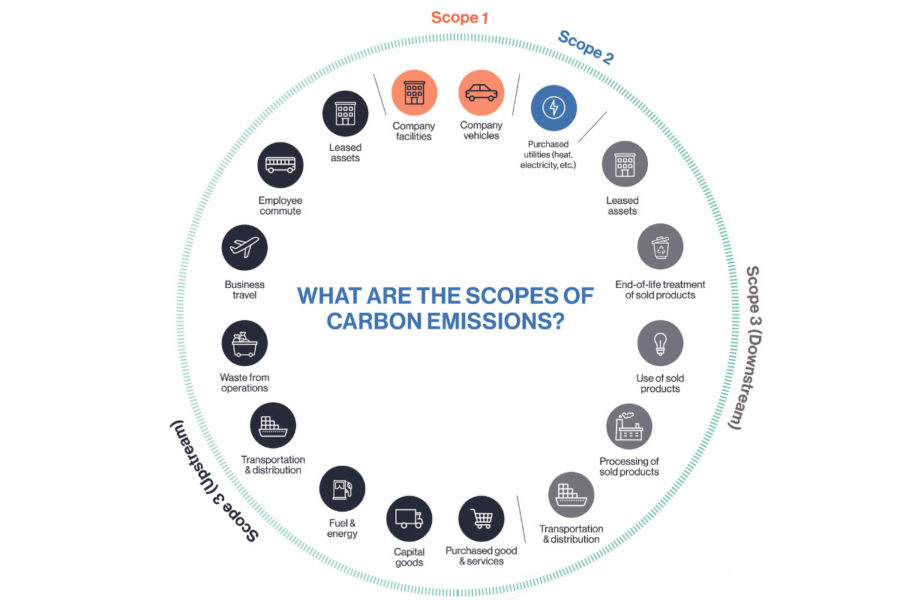
These are milestones that companies strive to hit to achieve carbon neutrality. Image courtesy of Artkura
Arktura, the LA-based manufacturer of architectural systems ranging from interior acoustics and ceiling panels to exterior aluminum facades, is prepared to take the industry to a greener tomorrow. Since 2014 Arktura has been a Scope 1 and Scope 2 carbon-neutral company, with sights set on being fully carbon-neutral.
In addition to initiatives that help keep the planet happy and healthy, our team at Arktura looked internally at the materials we used for the breadth of our standard acoustic systems. True innovation begins with sustainable practices, which is why our acoustic baffles and clouds are made of proprietary Soft Sound® material. Arktura’s Soft Sound bridges form and function with this PET felt material, made from PET plastic, with up to 60% recycled content. This sound-dampening material is made available in various finish options, including a premium wood texture, to bring this wonder material to as many projects as possible. Arktura transforms this felt into a versatile acoustic base for backing wall and ceiling panels, acoustic fins, and modules that make up our baffle/cloud systems.
Arktura Case Study: UNLV Hospitality Hall

UNLV’s Hospitality Hall in Las Vegas, designed by Carpenter Sellers Del Gatto Architects, features Arktura’s exterior Secare system, which looks great and helps prevent excess sunlight inside the building. Photo courtesy of Arktura
One such project that called on Arktura’s know-how for sustainable project in the bult environment was UNLV’s Hospitality Hall. Home to the William F. Harrah College of Hospitality, a grand, striking structure on the campus of the University of Nevada, Las Vegas. This facility serves as the premier hospitality program on campus, and its architecture and design reflect the industry’s finest resorts. One of the hall’s most striking features is its facade, which features a Secare® facade designed to add texture and visual interest to the building. The facade is made up of staggered steel tubes that create a striking contrast with the smooth surface of the glass panels. This combination of smooth glass and sharp angles creates a sense of depth and richness in the building’s exterior.
Additionally, this design choice helps to further differentiate the facility from other buildings on campus, creating an impressive and unique atmosphere for students entering the hospitality program. The Secare facade contributes to the campus’ eclectic presence by adding a dynamic and permanent quality to the structure while also reducing its occupants’ exposure to direct sunlight by up to 60%. Designed in partnership with Carpenter Sellers Del Gatto Architects and installed by PCI – LV, this project provides students with an incredible learning experience in a stunning setting.
The project was awarded LEED Silver in 2018 based on various project factors, including its location, proximity to public transportation, and diverse services like restaurants, banks, grocery, and more. The completed building features large arrays of vegetated open space, modern irrigation systems designed to use less water, and energy. UNLV says materiality also played a crucial role in this honor, featuring:
• More than 20% of materials have recycled content
• Greater than 13% of materials were sourced locally
• Heat gain reduction – The Secare system installed on this project supported reduced heat gain for this building. The stainless-steel screen protects the lobby area from severe sun exposure, while lending itself to being a focal point feature.
The construction and building industry increasingly invest in sustainable solutions that consider the environment and resources. Businesses must consider the impact of their operations on the environment, from their energy use to their materials and waste management. Sustainable building practices are becoming the norm, with green certifications gaining momentum in the industry. At Arktura, sustainable design is essential for a better-built environment. We’re committed to sustainability initiatives and continuously strive to improve our environmental performance.
Omar Ramirez contributed to this article.

